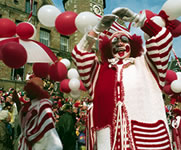Other highlights
Places of interest
The mill town of Gifhorn enjoys an idyllic setting in the southern Lüneburg Heath region, between Hannover, Braunschweig and Wolfsburg, close to where the Aller and Ise rivers meet. Its bustling markets are a hive of activity, attracting visitors and locals alike to the charming pedestrian precinct. The market square is an ideal starting point for exploring the town's historical houses, while the palace, Russian Orthodox church and water tower are also well worth a visit. Guelph palace
In 1525, Duke Ernst the Confessor initiated the construction of this Renaissance palace, which for a short time served as the residence of the Dukes of Celle. Thanks to its underground casemates, Guelph palace was virtually impregnable in its time, and has never been conquered. Also worthy of mention is the gatehouse, the oldest building in the complex, with its elegant semicircular gables. The palace's Historical Museum, meanwhile, is housed in the former commandant's quarters. Alongside temporary exhibitions this popular attraction covers pre- and early history, the rise of the town and local wildlife down the ages. Russian Orthodox church
Gifhorn's Russian Orthodox church may not be of great historical importance, but it is still an extraordinary sight. Don't miss the chance to visit this replica of a Russian wooden church, which displays numerous copies of exquisite icon paintings. Inside the building, an unimpeded view up to its highest point makes you feel like you're in a cathedral. This distinctive church with its eight gilded onion domes is found within the grounds of the Mill Museum. Water Tower
Built in 1910, Gifhorn's mighty water tower stands on a sandy hill and is home to the highest panorama café in the Lüneburg Heath at 90 metres. Climb the 120 steps of the beautiful spiral staircase or take the glass lift to the top, and you will be rewarded with stunning views of the surrounding region. Particularly impressive are the heavy cast-iron pressure and drainage pipes found throughout the entire tower, the thick walls and the concave base of the hand-riveted water tank, which once held 150,000 litres.
In 1525, Duke Ernst the Confessor initiated the construction of this Renaissance palace, which for a short time served as the residence of the Dukes of Celle. Thanks to its underground casemates, Guelph palace was virtually impregnable in its time, and has never been conquered. Also worthy of mention is the gatehouse, the oldest building in the complex, with its elegant semicircular gables. The palace's Historical Museum, meanwhile, is housed in the former commandant's quarters. Alongside temporary exhibitions this popular attraction covers pre- and early history, the rise of the town and local wildlife down the ages.
Gifhorn's Russian Orthodox church may not be of great historical importance, but it is still an extraordinary sight. Don't miss the chance to visit this replica of a Russian wooden church, which displays numerous copies of exquisite icon paintings. Inside the building, an unimpeded view up to its highest point makes you feel like you're in a cathedral. This distinctive church with its eight gilded onion domes is found within the grounds of the Mill Museum.
Built in 1910, Gifhorn's mighty water tower stands on a sandy hill and is home to the highest panorama café in the Lüneburg Heath at 90 metres. Climb the 120 steps of the beautiful spiral staircase or take the glass lift to the top, and you will be rewarded with stunning views of the surrounding region. Particularly impressive are the heavy cast-iron pressure and drainage pipes found throughout the entire tower, the thick walls and the concave base of the hand-riveted water tank, which once held 150,000 litres.
Travel Planner
Select an option...



